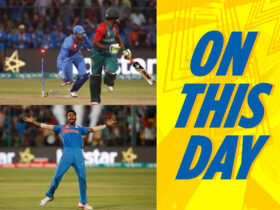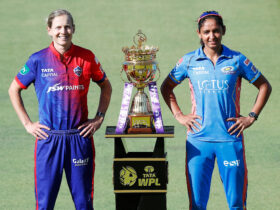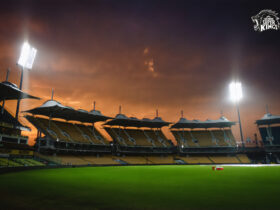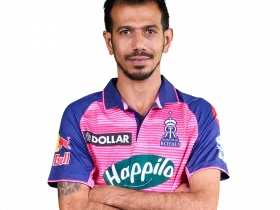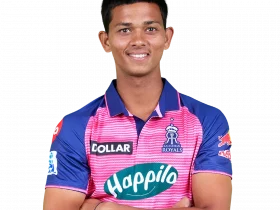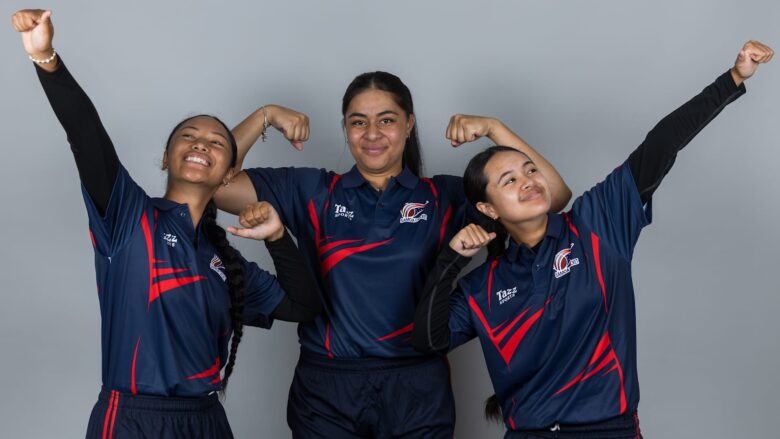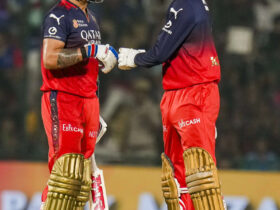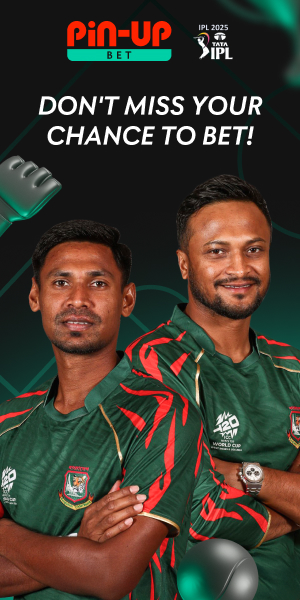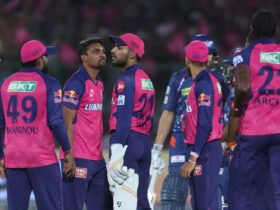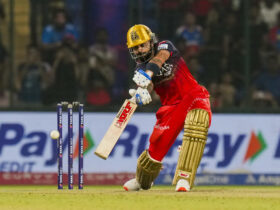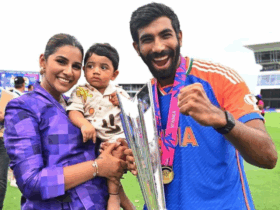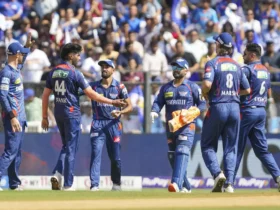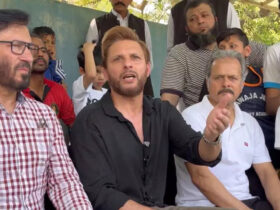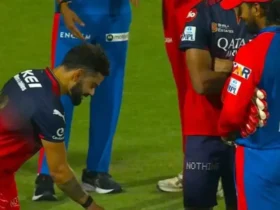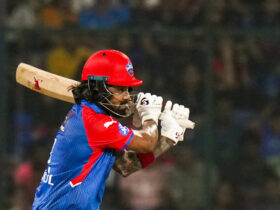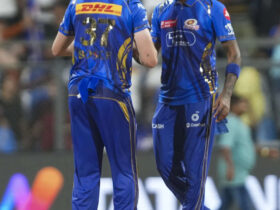Swagger of the 685: Samoa’s Message to the World at U19WC 2025
By Daniel Beswick in Kuala Lumpur
It’s 9:30 on a Tuesday morning, and even in a tucked-away meeting room of a hotel in Subang Jaya, Samoa’s newest sporting heroes can be heard in full voice by the cricket world.
The team, ready to represent The 685, a nickname derived from Samoa’s dialing code, sends their message through song.
“Oi lou loto e Samoa na o oe, ou te le solomuli ou te musu e tauvalea oe.”
“Samoa you are the only one, I will do my best, I do not want to bring shame to you.”
Amidst the joy and jubilation of their media day, it dawns on the squad how close they are to creating more history for their country and the East Asia-Pacific region.
“What stands out for me is their energy. They implement our culture and everything,” head coach and Samoa women’s senior international Tuaoloa Helen Semau explains while looking at the squad, still riding the emotions of the team punching their ticket to the tournament.
“And that’s why they’re so loud. Sometimes you can hear us say ‘Be quiet!’ But no one has an inside voice. No Samoan has an inside voice. They don’t know what that means.
“They’re loud, but they are humble, but other people here (in Malaysia) don’t know that. Some of our girls are quite young and (experiencing their) first time out of the country.
“(For) some of the other countries, it’s a cultural shock.”
Far from bringing shame to their country, it has instead been songs of pride and triumph sung by Samoa on the cricket field over the last 12 months, sending shockwaves on both men’s and women’s fronts.
Their men’s senior team upset the likes of Vanuatu and the Cook Islands to progress to the Asia/East Asia-Pacific Qualifier for the 2026 Men’s T20 World Cup later in 2025, though the work of Caleb Jasmat’s men was bettered by their U19’s Women’s compatriots, stunning regional giants Papua New Guinea, emerging force Indonesia, and Fiji to claim a shock World Cup qualification in Bali.
Read on: Samoa qualify for Women’s U19 T20 World Cup after stunning East Asia-Pacific run
Read more on Samoa’s men keeping 2026 T20 World Cup dreams alive
Gallery
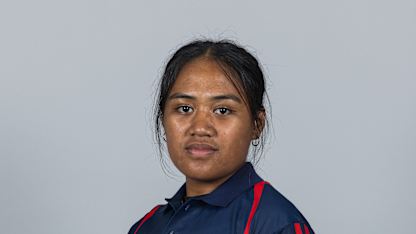
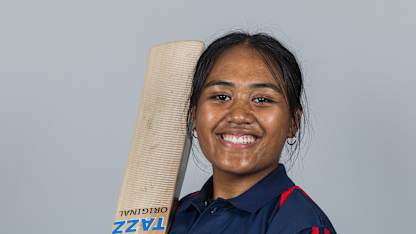
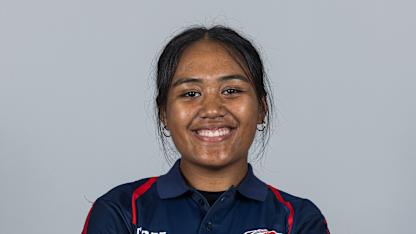
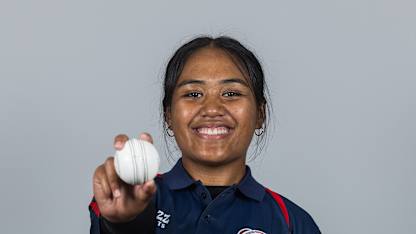
“To be honest, words can’t explain the achievement,” Semau continues.
“It’s been overwhelming and it’s been quite a difficult road for little old Samoa to make it this far.
“But I can tell you that it means a lot. It means everything to our little nation. Not only that, but to our players. And at the moment, they’re all trying to soak it all in.”
There were several standouts in Samoa’s qualifying run, headlined by middle-order batter Verra Ferane, who should also be deployed in the middle overs with her right-arm seam in Malaysia.
Angel Sootaga So is already a senior international, and took part in Samoa’s qualification campaign for the last senior T20 World Cup, though perhaps the most fascinating story of the team surrounds captain Avetia Fetu Mapu.
Easily the least experienced player leading their team in Malaysia in conventional cricket, Mapu’s skills instead have more traditional and cultural roots.
Having only played cricket for just over 12 months, Mapu excels in Kilikiti, a form of island cricket that resembles other Polynesian bat and ball games in the region.
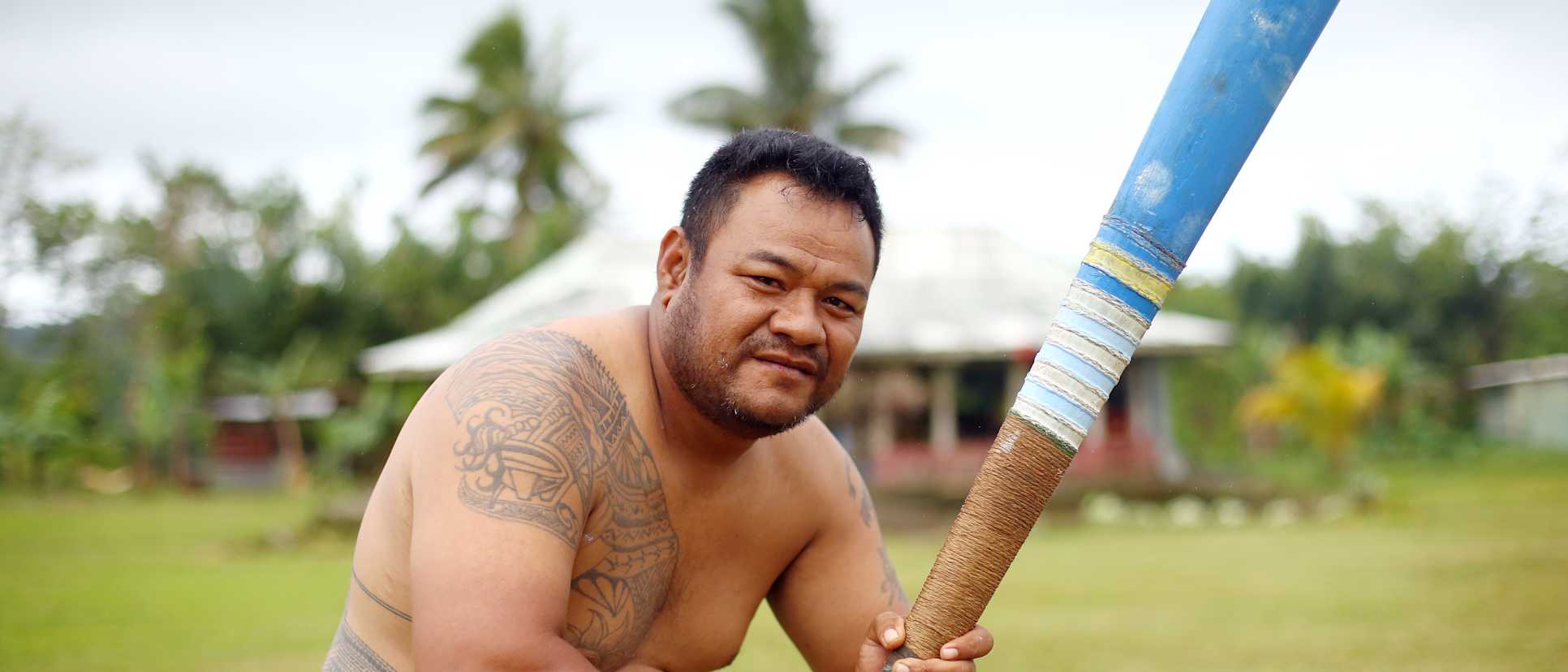
A hand-made local island cricket bat /// Mark Kolbe/Getty Images
Played on concrete strips around the country, it’s not unusual for entire villages to play, with fielders fetching rubber balls after crashing onto tin rooftops or into the ocean.
Semau was so impressed watching Mapu that she wanted to fast-track the 17-year-old into the squad, and give her captaincy responsibility for the qualifiers, but did need her support group’s blessing first.
“Mapu has only been playing traditional cricket for a year now.
“I went to a Samoan cricket tournament over in Auckland (New Zealand) and I just happened to see this person in the corner of my eye and I was like, ‘No way. Surely she will get an opportunity to grow as a traditional cricket player.’
“And then, I spoke to her parents about it. In Samoan culture, especially with the young girls, we don’t go directly to the actual player. We will go and talk to the parents first.
“I think their concern was that she’s never played before. She would just get nervous and probably crack, but they jumped at the opportunity.”
“Yes, it’s our ancestors’ game. We will never part with it. But traditional cricket comes with opportunities, so why not try and push our girls to try and get some of those rewarding opportunities playing the sport that they love?”
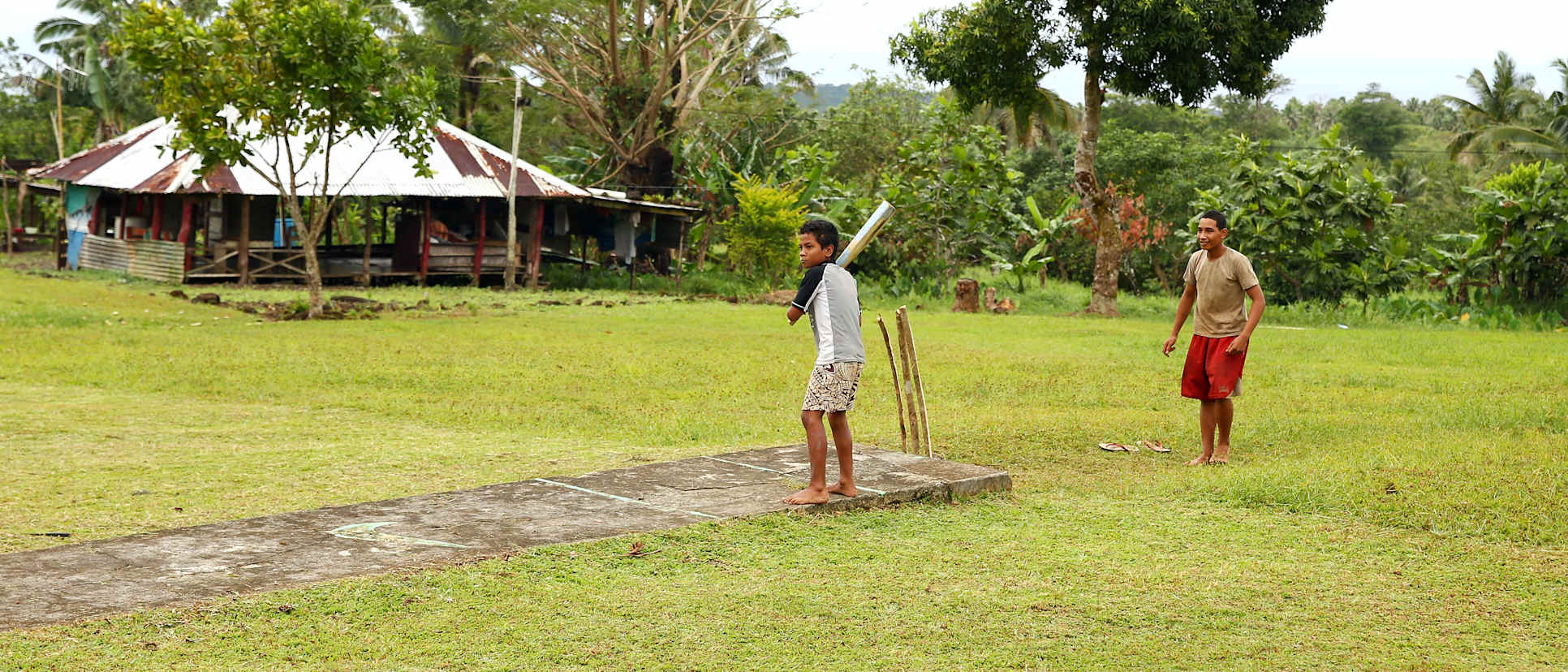
A local Kilikiti game /// Mark Kolbe/Getty Images
Mapu’s first responsibilities as skipper was an early rise and a police-escorted bus trip downtown, brushing shoulders with her 15 contemporaries at the captains’ photo day.
The skipper admitted she was “a little bit dizzy” looking up at the Petronas Twin Towers where the photo was taken, with the scale of the building and the upcoming tournament realized.
“It was a good meet-up, getting to meet the other girls was unbelievable.
“The feeling is pretty intense. Not in a bad way, but I could just feel the pressure lift a little bit.”
Even as one of the closer locations for Samoa to travel for a World Cup, just reaching Kuala Lumpur is a challenge, a reflection of just some of the challenges faced by teams in the East Asia-Pacific region.
Those based in Apia travelled via Auckland and Singapore, and while flights for global events are provided by the ICC, the arduous journey takes over 24 hours when factoring in time between connections.
Flights to other Pacific islands are scarce, meaning pathway events for World Cups are almost the only chance to play international cricket.
Also read: Where to watch the U19 T20WC 2025
Opportunities are not exactly abundant on other fronts too. Bringing in equipment is painstaking, and in several countries there are no dedicated cricket shops to readily sell bats and other items to the general public. Members in the region have instead forged partnerships with batmakers and equipment from either Australia or New Zealand, or relied on generosity from self-proclaimed cricketing philanthropists who have dedicated time and money to push the Pacific’s cricketing cause.
On the field, turf wickets are a novelty for Pasifika cricketers, with the region’s ecosystem preventing the curation of more conventional pitches. Dealing with climate and crab holes, Vanuatu have innovated with the creation of a hybrid wicket put down on their premiere ground, mixing two inches of Sydney Cricket Ground clay with synthetic grass.
With recent regulations allowing official T20Is to be played on synthetic surfaces, Samoa have opted to stay with what they have at the Garden Oval complex, the location where Darius Visser famously broke the World Record for the most runs scored in a Men’s T20I over (39) last year.
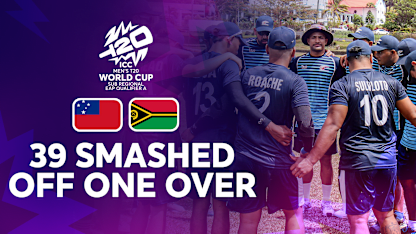
History was created at the ICC Men’s T20 World Cup Sub Regional East Asia-Pacific Qualifier A event on Tuesday as Darius Visser helped break the record for most runs from one over of a men’s T20I contest.
Even playing on a grass outfield is still a novelty for some members of the squad, though with everything against them, the squad aims to channel Nafanua, a Samoan goddess of war.
“Nafanua was a warrior princess,” Semau continues.
“Very fierce, very strong. And we want to use that Nafanua-type fierceness and strength to try and carry us through. Just the characteristics of that particular warrior.”
According to local legend, Nafanua was instructed to defend her village from invading enemies, and freeing family and captives, cutting a toa tree to use its wood to craft four weapons to drive away enemy Lilomai’ava and his army.
Upon retrieving the wood, Nafanua found the remains covered in sea shells that enhanced her weaponry.
“The shells live, but the toa tree dies,” reads the Samoan proverb. The moral: Great strength is not just through power, it requires wisdom and good judgement.
Also read: Teammates tip future stars at U19 T20WC 2025
Semau is ready to do her utmost to teach her team, and while only wisdom comes through experience, the Samoan team is ready to soak in every single moment in their country’s first participation at a World Cup in cricket at any level or format.
“They’ve been hungry to learn.
“I think for me, it’s hard not to get emotional, even when we’re having our team talks because to me, everyone is still pretty much in disbelief that we are here.
“Looking at all the other teams, it’s hard not to get excited. And I don’t want to take the excitement away from them.
“I want to keep that energy because, you know, when you have that sort of energy on the field, yes, she can be serious, but you can also enjoy and that’s what we want, you know, want them to be able to play.”
Norah Jade-Salima, Stefania Pauga and Selina Lilo ahead of the ICC Women’s U19 T20 World Cup 2025 /// Alex Davidson/ICC via Getty Images
The Samoan team have now travelled to Sarawak on the island of Borneo where they will be based for Group C action, first meeting Nigeria on January 18, a country with a population approximately 994 times bigger than their 225,000.
They then play South Africa on January 20, before their final group game on January 22, fittingly against their cousins and cricketing giants New Zealand, where five of the Samoan squad are based.
Semau wants the group to not shy away from the challenge in a bid to create more history.
“I keep telling the girls, ‘Let’s go out there, let’s shock the world.’
“Yes, Samoa is a dot on the map (to some). But that’s what we want to do.
“We want to be able to make our mark in the World Cup and just show that we deserve a spot here.”
“Samoa you are the only one, I will do my best, I do not want to bring shame to you.”

Cricket fever grips Kuching, Sarawak | U19WC 2025


